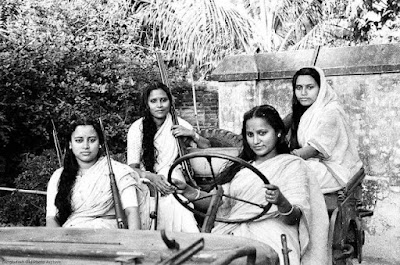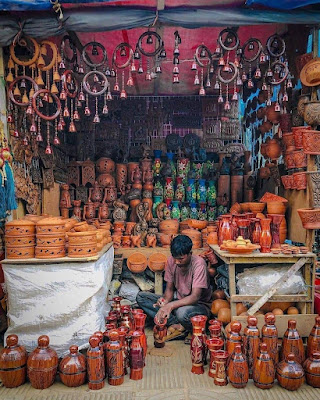Ashun
Please come in,
Welcome
Sonargaon Folk Art Museum, Bangladesh
Photo credit: Kristin Boekhoff
I was browsing through my stats, reading all the different countries that have people who visit my blog. Wow!
Bangladesh has been popping up recently.
Bangladesh?
I know pretty much nothing about that country! So…time to do some research.
Pathia Rajbari Mondir, Rajshahi, Bangladesh
First of all, how do I say ‘Welcome’?
Easy, right? Well. Maybe not.
Bengali is the language spoken there, but as in many places, there is ‘welcome’ and then there is ‘welcome’!
I made an executive decision and went with the less formal version, which translates to ‘please come in’.
Dhaka, Bangladesh
Bangladesh is a very ancient country. There are archaeological findings that date it back to minimum 500BCE. Before that they believe it was inhabited, but structures were made out of wood and reeds, so have not survived the centuries.
Wow. Kinda’ boggles my mind!
To put that in perspective, 500BCE is when the prophets were active in the Old Testament, Bible. That’s 500 years before Jesus’ time.
Madangopal Jiu Mandi temple; 17th Century CE; West Bengal
Bangladesh has been under rule by ancient kingdoms, Muslim rule, dynasties, British colonialism, authoritarian and parliamentary governments, martial law and military coups.
1576CE; Akbar leads his army into battle against Daud Kharkarrani,
the last Sultan of Bengal.
The People’s Republic of Bangladesh is the 8th most populous country in the world. In 57,320 square miles (148,460 square kilometers) there is packed 171 million people -making it also one of the most densely populated countries.

It is bordered by India, and Burma, and the Bay of Bengal. Nepal and Bhutan are very close to its’ borders also.
Bangladesh.
Where did a name come from like that?
Well, because the country is so ancient, some of this is guesswork. There is early Sanskrit literature that talks about the Kingdom of Banya.
Same area. Seems like Banya at some point turned into Bengal. Which turned into Bangladesh.
Bangladesh has a long, involved history as it is so old, and a popular port site.
In 326BCE Alexander the Great invaded.
Pretty much if Alex was coming, prepare to be conquered. Except this time.
Charles Le Brun 1673 “Alexander and King Porus” Depicting the battle of 326CE, Pakistan
The Gangaridai Empire was too big, too strong. Alex’s advisors convinced him to withdraw, and go around!
That was a big deal back then.
The Gangaridai Empire flourished, and Bangladesh became a Buddhist hub.
Until the next empire came into power, the next king or ruler, and a new religion!
Repeat.
Repeat.
There were Brahman, Hindu, Buddhist and Islamist rulers. By 1245CE the country was riddled with feudal fighting and religious pressures.
There were lots of revolts, no wonder.
During all this fighting and conquering and revolting there were some very impressive archeological projects, large mosques and progressive literature writing going on.
There were links with China, Java & Ceylon who had some liberal policies that focused on justice, and charity.
Postage stamps
In 1757 the British East India Company seized control.That’s another whole blog, so let’s just say they controlled until 1947.
Freedom, right?
Nope.
Edwin Lord Weeks 1849-1903, ‘Mughal Imperial Court’
Until 1971 Bangladesh had riots, treaties, proclamations, diplomatic maneuverings, military coups, starvation, major famine, fighting, student uprisings and demonstrations.
There were major divisions over the official language, even!
Was it Bengali, or Urdu?
Should there be an official national religion declared?
Just what were the borders of Bangladesh?
In 1971 a Provisional Government of Bangladesh was formed as the country’s first government. It issued a Proclamation of Independence.
The Proclamation declared Equality, Human Dignity and Social Justice as fundamental principles.
Then the lure of power seems to have taken over. Again.
There was a state of emergency, a major famine, newspapers were banned, a military Special Unit was formed with many human rights abuse accusations.
Things were a mess again. Leaders were jailed and then killed. The military overthrew the current president, but then there was mutiny and a counter-coup. Bangladesh was back to rioting, coups, military law, authoritarian government, socialism, disputes with India, assassinations and political repression.
Whew.
Rickshaw traffic
The 1990’s saw a renewal of parliamentary democracy. There were 2 main political parties, alternating who was in power.
With that stability, Bangladesh has become one of the world’s fastest growing economies. The garment industry and international remittance programs are major factors in this.
Bangladesh has also stepped up its infrastructure development, meaning it is improving things like power plants, schools, transportation, sewers and clean drinking water.
Postage stamp, 1983. Photo credit: Bob Suir
Let’s find out more of just who and what is Bangladesh today?The official language is Bengali,
the 2nd most widely spoken language in India also.
There are many dialects from smaller indigenous groups, with words from Portuguese, English, Arabic, Persian and Hindi tucked in.
Native costumes, Garo people
The official religion is Islam.
Most are Sunni, while a lesser amount are Shi’i. Hindus are the main minority followed by much smaller groups of Christians & Buddhists.
Zaminder’s Mansions and Palaces
Bangladesh is a mixture of modern and rural. It has urban cities and villages with no electricity. There are pre-fabricated 1 and 2 story buildings and thatched roof bamboo huts.
Through the Lens of Shah Rukh Khan
It has a sub-tropical monsoon climate.
Lots of rain.
It deals with river flooding regularly.
A tea estate
Almost half of the population is in the agricultural business. Rice is the main product, but also wheat, peas, beans, lentils, sweet potatoes, oil seeds, spices, sugarcane, tobacco, bananas, mangoes and pineapples!!!
…and watermelons!

The official bird is the magpie robin.
The flower is the water Lily.
The fruit is jackfruit.
The fish is hilsa.
The tree is the mango tree.
The official tiger is the Royal Bengal Tiger.
Bangladesh still struggles with political instability. There are accusations of authoritarianism and human rights abuses. And yet it has really worked on the Rohingya refugee crisis. The influx of so many refugees strained their resources almost to the breaking point. Their economic growth continues.
If they can just get along politically, and clean up any remaining human rights issues, I see a bright future for Bangladesh. Definitely a country to watch!
‘Til next time,
inkspired
Pinterest: K.Kloberdans
Facebook: Karen Kloberdans





























No comments:
Post a Comment